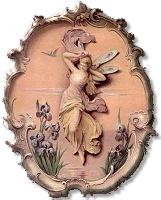
With an increase of population, there followed an increase in disease ... there were many diseases and the ability to treat them was either nonexistent or only treated the disease slightly ... the following are a few examples ...

Cholera
- Caused by human waste in drinking water
- Symptoms: nausea, dizziness, vomiting, diarrhea, overwhelming thirst, cramps
- Death often followed within 24 hours of the first symptom
- June 1832 ... 4000 people die of Cholera in New York City
- 1848 ... around 2,000 people a week die in a cholera epidemic (England)

Click on the photo~

Consumption
- Tuberculosis of the lungs
- Can also cause tumors filled with baterium
- Symptoms - weakness, fatigue, wasting away, blood in the lungs
- Killed hundreds of thousands of English in the 19th century and into the 20th century
- Quarantine requried: very contagious
- Very difficult to treat, very virulent
- If it could be afforded, sent to a sanatorium/sanitarium
Typhus

- Spread by body lice and dirty conditions
- Symptoms: delirium, headaches, rash, high fever
- Very difficult to treat bacteria
- In America, a typhus epidemic killed the son of Franklin Pierce in Concord, New Hampshire in 1843 and struck in Philadelphia in 1837. Several epidemics occurred in Baltimore, Memphis and Washington DC between 1865 and 1873. Typhus fever was also a significant killer during the US Civil War, although typhoid fever was the more prevalent cause of US Civil War "camp fever".
- Typhoid is not to be confused with typhus.

Unrelated to Typhoid Fever caused by food contaminated with the Salmonella bacterium which is much easier to treat. But that story is no picnic either and a story for another day.
~ embellished from the notes from Lady Victorian Historian




